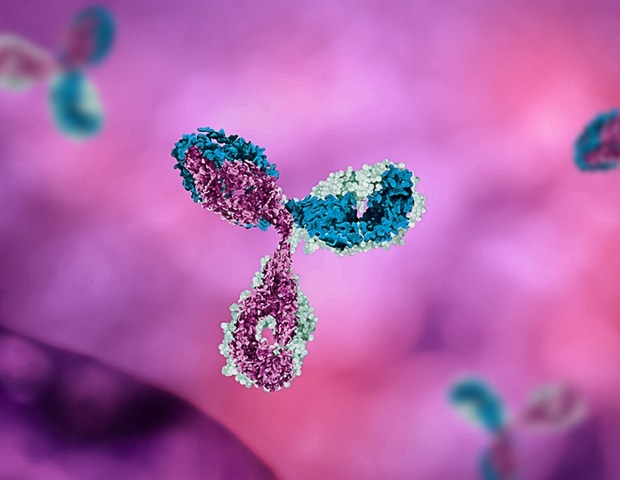Coronavirus illness 2019 (COVID-19) rapidly unfold worldwide 2020, inflicting over 6.2 million deaths and widespread financial crises. Most often, the illness causes gentle flu-like signs, however it will probably progress to a extra critical illness, inflicting organ failure and long-term injury.
Extreme acute respiratory symptom coronavirus 2 (SARS-CoV-2), the causative agent of COVID-19, primarily spreads between hosts by way of droplet transmission however can observe different routes additionally.
Researchers from the Hospital Normal Universitario Gregorio Marañón have been investigating the unfold of the illness from pregnant ladies to newborns, and have revealed their leads to The Paediatric Infectious Illness Journal.
The examine
Any pregnant lady with microbiologically confirmed SARS-CoV-2 an infection throughout any trimester or supply was eligible for inclusion within the examine, which befell throughout 13 totally different Spanish hospitals. Prognosis will need to have been confirmed utilizing reverse-transcriptase polymerase chain response (RT-PCR) on nasopharyngeal swabs. Demographic knowledge and scientific historical past, together with time of analysis, comorbidities, obstetric historical past, and scientific presentation of an infection have been gathered, in addition to perinatal and supply scientific knowledge.
Samples have been collected from pregnant ladies on the time of analysis and supply, and nasopharyngeal swabs have been collected from infants inside 48 hours post-delivery. Breast milk samples have been collected by way of hand or breast pumping. Organic samples have been examined for the presence of SARS-CoV-2 RNA utilizing a commercially out there package.
To categorise how an an infection may pass from the mom to the toddler, Blumberg’s classification was used. This defines intrauterine transmission as requiring optimistic nasopharyngeal swabs, amniotic fluid or neonatal blood inside 24 hours in addition to a optimistic swab of the neonatal respiratory tract inside 24 hours or optimistic IgM throughout the first week. Intrapartum/early postnatal transmission is outlined as requiring a damaging RT-PCR swab of the neonatal respiratory tract inside 24 hours of supply and a optimistic swab of the identical respiratory tract after 24 hours. Superficial publicity/transient viremia was outlined as optimistic PCR outcomes from a nasopharyngeal swab, amniotic fluid, wire blood, or neonatal blood inside 24 hours, however no proof of persistence or immune response.
Statistical evaluation consisted of using medians and interquartile ranges for steady variables, and categorical variables offered as absolute frequencies and percentages. Categorical variables have been in contrast utilizing the X^2 or Fisher’s precise take a look at, and steady variables have been assessed with the Wilcoxon rank-sum take a look at.
In complete, the main points of 174 ladies contaminated with SARS-CoV-2 throughout being pregnant have been recorded, with 177 newborns detailed. On the time of supply, 39% of girls had an acute an infection, 30% had a current an infection, and 31% had a previous an infection. 115 maternal blood samples and 81 placenta samples have been collected for RT-PCR, revealing just one case of viral load in each blood pattern and placenta, which originated from a lady with gentle scientific signs starting 48 hours prior to supply. The new child examined damaging for SARS-CoV-2 and remained asymptomatic. No viral load was detected in any breast milk samples.
All RT-PCR outcomes for wire blood and new child blood samples have been damaging, however viral load was detected in three new child urine samples and three meconium samples, and all of those newborns examined optimistic for SARS-CoV-2 infections by RT-PCR of nasopharyngeal swabs of their first 48 hours of age.
Whereas all newborns have been examined throughout the first forty-eight hours after supply, solely twelve infants confirmed optimistic take a look at outcomes. The researchers decided that three of the infants have been contaminated by way of intrauterine transmission, 5 have been contaminated by way of intrapartum or early postnatal transmission, and two have been by way of secretal contamination or transient viremia. As anticipated, all have been born to mothers who have been acutely contaminated on the time of supply. Solely two of the contaminated newborns confirmed any signs, each of which resolved with none important antagonistic occasions. When the statistical evaluation was carried out, no important variations have been discovered when evaluating the event of signs and admission to the neonatal intensive care unit between contaminated newborns and noninfected newborns.
Conclusions
This examine reveals that whereas intrauterine transmission of SARS-CoV-2 does seem very uncommon, it’s potential – though early postnatal transmission by way of contact with contaminated people is way extra frequent.
Wholesome infants contaminated on this method seem largely resistant to the illness, with most remaining asymptomatic or displaying gentle signs that resolved nicely. The presence of viremia stays troublesome to decide, however the researchers have proven that this can be very unlikely for the illness to pass in breast milk.
Total, this examine might assist to inform healthcare employees and reassure contaminated pregnant ladies.





